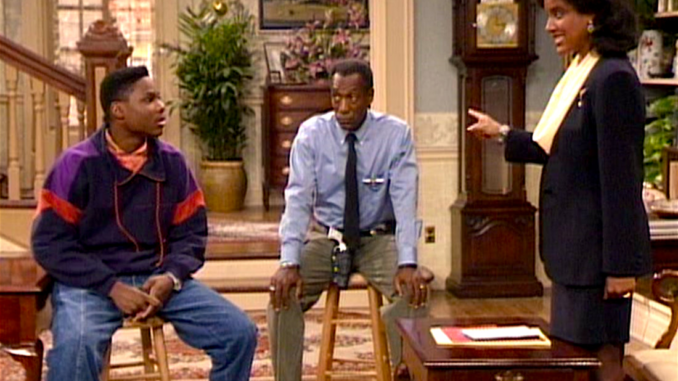
The Cosby Show was more than just a popular sitcom; it was a cultural touchstone that perfectly encapsulated the social, political, and cultural climate of the 1980s and 90s. From its fashion to its themes, the show resonated with viewers in a way that reflected the time period, while also pushing the boundaries of television. A closer look at the show’s cultural influence reveals just how much The Cosby Show became a defining product of its era.
The Fashion: A Glimpse into 80s and 90s Style
One of the most iconic aspects of The Cosby Show is its fashion. The Huxtables, with their impeccable style, were often seen wearing the latest fashions of the time. From Bill Cosby’s colorful sweaters and sweaters with bold patterns to Claire’s elegant and professional attire, the show’s wardrobe became synonymous with 1980s and 1990s fashion trends. The Huxtables’ fashion choices also reflected their status as a modern, well-to-do family, and helped to break the mold of traditional portrayals of Black families on television.
The fashion sense of the show also influenced real-world trends. The vibrant, sometimes daring colors and patterns seen on the characters were often replicated by viewers who admired the family’s look. Many viewers, especially those of African-American descent, saw the show’s characters as style icons who represented both success and individuality.
The Social Issues and Themes: Navigating a Changing America
At its core, The Cosby Show was more than just a family sitcom—it was a commentary on the social issues of the time. The show addressed topics like race, class, and identity, but in a way that was not overtly preachy. For example, while Dr. Huxtable and Claire were both successful professionals, their children were still growing up in a world that often presented them with challenges, from peer pressure to societal expectations.
The 80s and 90s were a time of significant social change, especially for African-Americans. The Civil Rights Movement was still fresh in the collective memory, and there was a shift in how African-Americans were being represented in the media. The Cosby Show presented a Black family that was successful, educated, and multi-dimensional, offering an image that contrasted sharply with the stereotypical portrayals of Black families as struggling or downtrodden. The Huxtables represented an evolving narrative for African-Americans, showing that it was possible to live a life of success and fulfillment in a society that still struggled with racial inequalities.
The show also subtly addressed other social issues, such as drug addiction, teenage rebellion, and the importance of family values, while still maintaining a lighthearted tone. This balance between humor and serious topics made it relatable to a broad audience and gave it a timeless appeal.
The Changing Face of Television: A Shift Toward Diversity
Before The Cosby Show, most television shows, especially sitcoms, were dominated by predominantly white casts. The Cosby Show was part of a wave of television programming that began to reflect a more diverse America. By showing a successful Black family as the central focus, the show broke down barriers for the inclusion of African-American characters in mainstream television.
Its success helped pave the way for other shows that showcased diverse families, such as A Different World, The Fresh Prince of Bel-Air, and Living Single. These shows helped to shift the paradigm of what television could look like, demonstrating that audiences were ready for stories that reflected the broader spectrum of American society. The impact of The Cosby Show went beyond its own success—it set the stage for more inclusive television in the years that followed.
The Enduring Cultural Impact
Decades after it aired, The Cosby Show remains a cultural touchstone. It is a time capsule that encapsulates the 80s and 90s in a way few other shows can. From the fashion to the social commentary, The Cosby Show captured the essence of its time while also influencing how we view family, race, and success. Its lasting legacy is not just in its entertainment value but in its ability to reflect and challenge societal norms.
